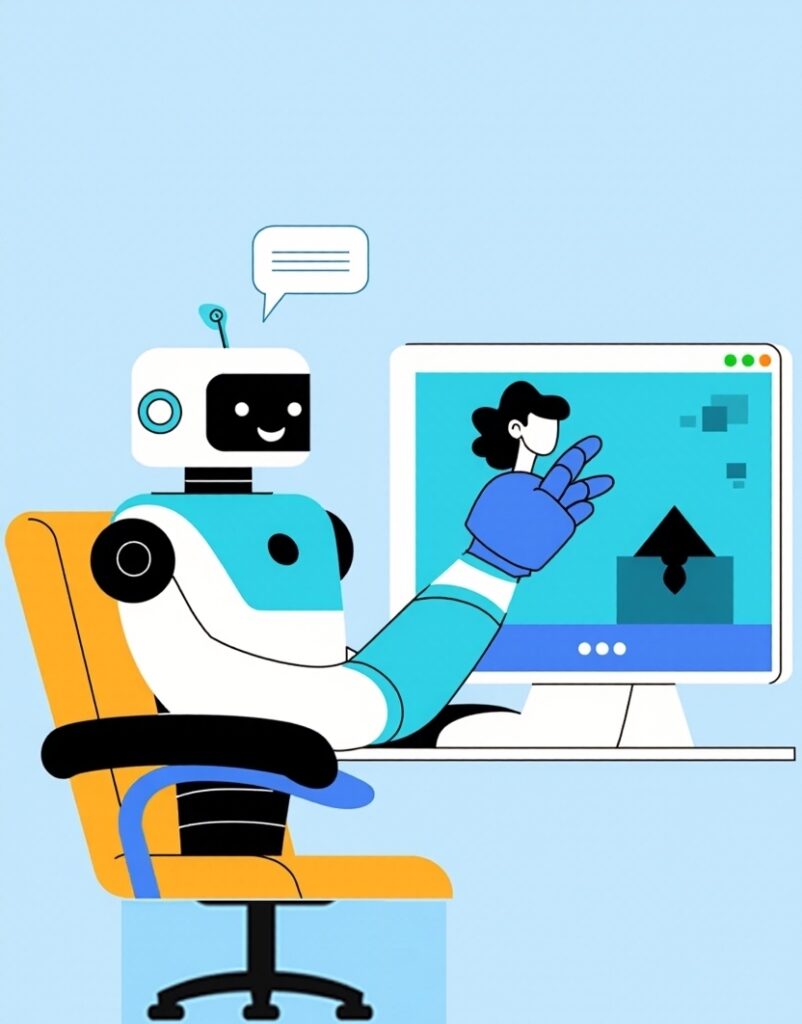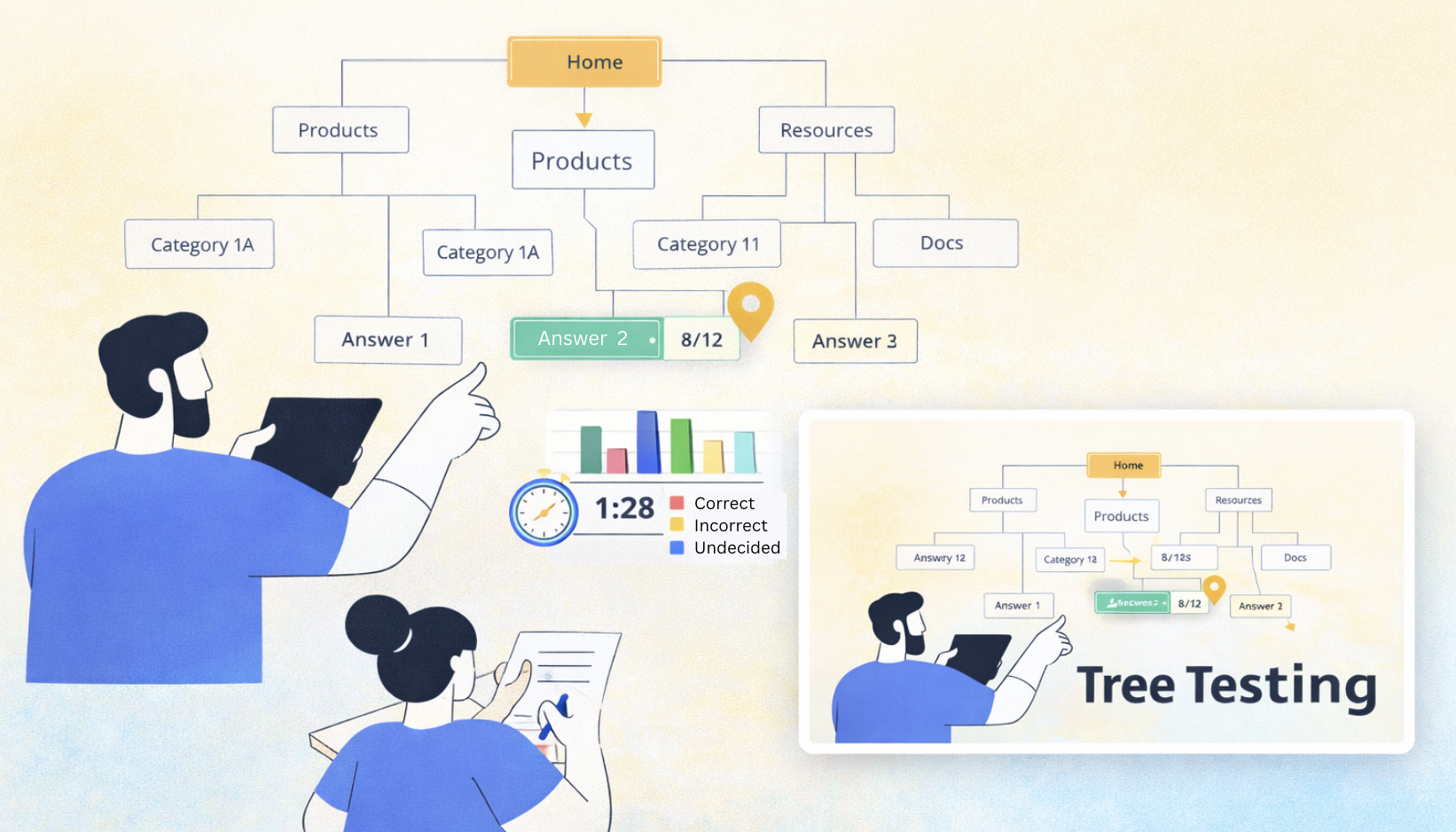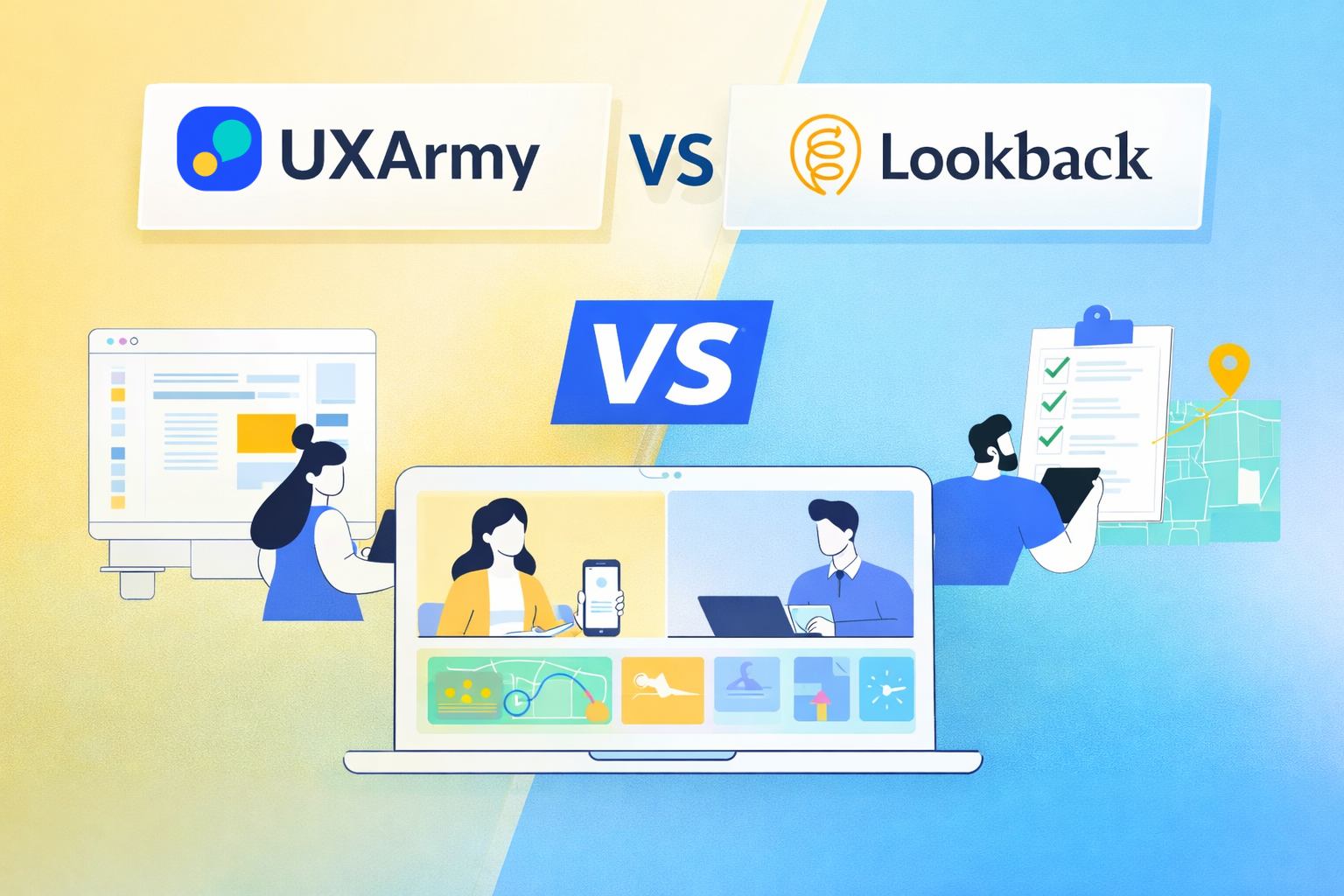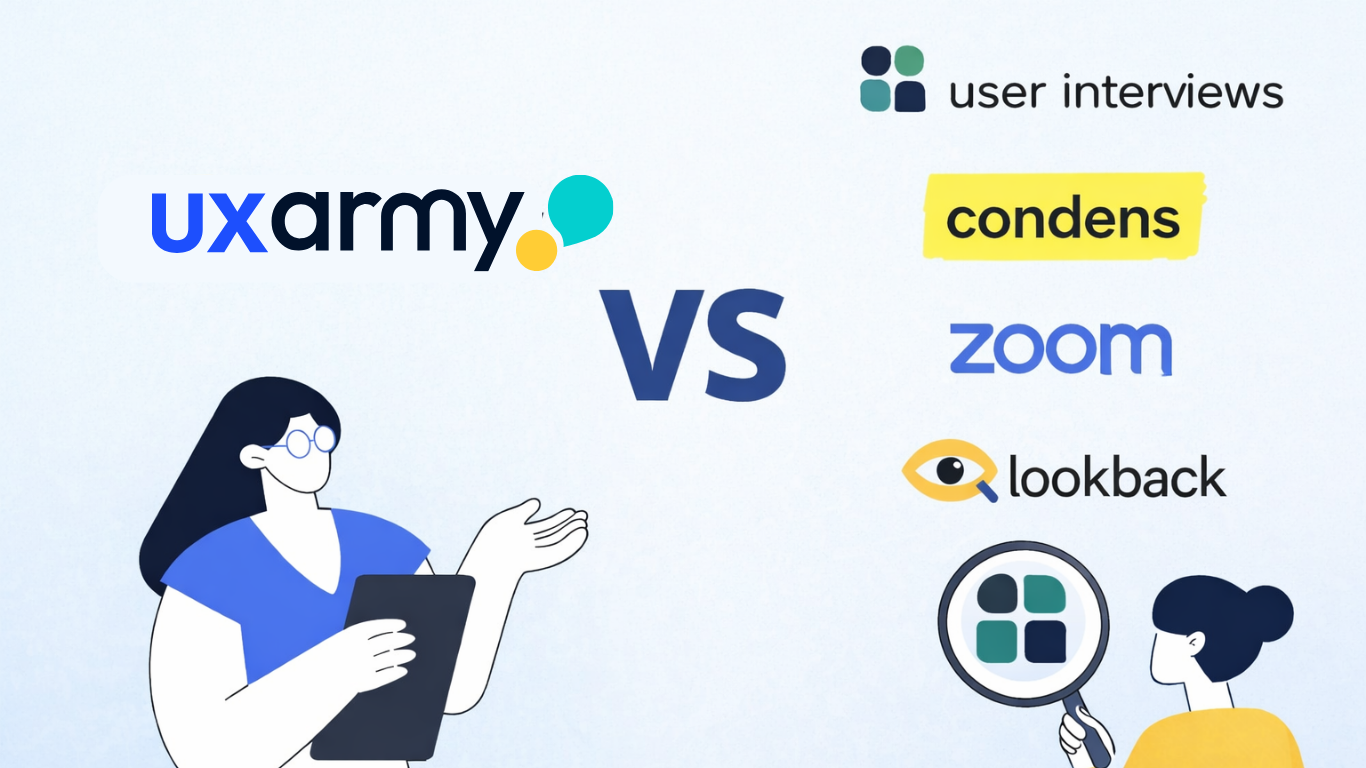The UX industry is facing a profound shift. The rise of AI-powered user research platforms has introduced new efficiencies that are reshaping how teams gather, analyze, and act on user insights. While these technologies offer immense promise, they also come with a sobering reality: many UX professionals are finding themselves sidelined, their roles automated or significantly altered.
Product and design leaders are under intense pressure to deliver more with less. With AI tools promising “research at the speed of business,” executives are increasingly opting for platforms that reduce headcount and compress timelines. For many UX researchers, this new landscape is not just transformative – it’s disruptive.
This blog explores the forces behind this transformation, the implications for the UX profession, and the paths forward for those navigating this rapidly evolving field.
The AI-Driven Transformation of UX Research
AI is no longer a peripheral tool – it’s at the core of how research is conducted today. Platforms now leverage machine learning to:
- Replace manual analysis with algorithmic pattern detection
- Automate feedback collection via chatbot surveys or passive interaction tracking
- Generate personas and user journeys using synthetic or aggregated data
- Analyze qualitative inputs using Natural Language Processing (NLP) to extract themes, sentiment, and intent
This new breed of AI-enabled tools promises to make user research faster, cheaper, and more scalable. The result? Teams can run more studies, with less effort, and turn around insights that once took weeks in just hours.
“AI is turning research from a centralized bottleneck into a distributed function embedded across the product lifecycle.”
Ready to build that trust and kickstart your research?
let’s make trust the foundation of every project you work on.

Executive Priorities Driving Change
Why is this shift happening now? The answer lies in executive agendas:
- Cost Efficiency: Boards and stakeholders demand leaner operations. Cutting research headcount is easier when AI tools promise similar outcomes.
- Speed to Market: Competitive pressure pushes teams to deliver faster. AI enables just-in-time research aligned with sprint cycles.
- Scalability Without Hiring: AI platforms scale capacity without increasing payroll or requiring deep methodological knowledge.
- Automation Appeal: Executives are drawn to tools that require minimal oversight. “Set it and forget it” research is highly attractive.
- Perceived Adequacy: Many decision-makers view AI-generated insights as “good enough” for iterative product development.
This creates a new equation: Faster + Cheaper + Acceptable ≠ Human Researcher.
How AI Platforms Appear to Replace Human Researchers
The capabilities of AI platforms are now encroaching on core tasks traditionally handled by UX researchers:
1. Automated Survey Design
AI tools can suggest or auto-generate survey questions based on product goals, saving time and reducing reliance on survey design expertise.
2. Real-time Behavioral Analysis
Heatmaps, session replays, and clickstream data are now processed in real time, surfacing friction points automatically.
3. Synthetic User Testing
AI can simulate how users might behave in an interface, offering early directional insights without needing actual users.
4. Predictive Insight Generation
Using historical data, some tools forecast future behavior or usage patterns, enabling proactive design decisions.
5. Self-Service Research
Product managers and designers can now run their own tests using AI-enabled templates – without waiting for research team capacity.
Together, these capabilities reduce the need for human researchers in the discovery and validation phases of product development.

The Human Cost: UX Researchers Under Pressure
The impact on UX professionals is tangible and painful:
- Layoffs and Downsizing: Organizations are trimming research headcount, especially in tech and SaaS sectors.
- Junior Roles Eliminated: Entry-level researchers face fewer opportunities as basic research becomes automated.
- Redefined Senior Roles: Veteran researchers are often moved into strategy or product functions, away from hands-on work.
- Reduced Demand for Qualitative Specialists: Rich, human-led interviews and ethnographic work are deprioritized.
- Freelancers and Contractors Affected: Short-term research engagements are increasingly handled via platforms instead of human consultants.
“I used to run five moderated studies a month. Now I oversee templates and write summaries for AI-generated reports.” – Senior UX Researcher, Fortune 500 SaaS company
What’s Being Lost in Translation
While AI tools offer speed and scale, they often fall short in areas critical to deep user understanding:
Contextual Sensitivity
AI struggles to interpret cultural nuances, humor, and unspoken social dynamics – all of which shape user behavior.
Empathy and Human Connection
Real user conversations build rapport, trust, and insights that can’t be captured through bots or sentiment analysis alone.
Critical Thinking and Synthesis
AI often equates correlation with causation. Human researchers add layers of interpretation, skepticism, and insight that go beyond patterns.
Ethical Reasoning
Bias baked into AI models can skew results. Human oversight is essential to question assumptions and prevent harm.
Strategic Framing
UX researchers often help shape what to ask, not just analyze what’s been asked. They guide teams to ask better questions – and solve the right problems.
The Changing UX Design Landscape
Designers are not immune to these changes. As AI reshapes research, it also reshapes design workflows:
- Designers Conducting Research: Designers are increasingly expected to run lightweight tests themselves.
- Template-Driven Design Systems: Pre-made UI patterns reduce the need for extensive user testing.
- AI-Generated UI Variants: Tools like Galileo and Uizard create screen variations based on user data.
- Time Pressure: With fewer researchers, designers must justify time spent on testing, often relying on faster, AI-driven methods.
- New Skillsets: Design roles now prioritize data fluency, tool literacy, and insight application over traditional UX research collaboration.
Short-term Gains vs. Long-term Consequences
Organizations adopting AI tools for research gain immediate advantages:
- Reduced Headcount Costs
- Faster Research Cycles
- Accelerated Product Launches
But these gains may come with unintended consequences:
- Surface-Level Understanding: AI often misses the “why” behind behavior, leading to shallow insights.
- Innovation Plateau: Optimizing for known behaviors can hinder breakthrough thinking.
- Product Missteps: Misinterpreted AI insights can result in flawed designs or missed user needs.
- Loss of Institutional Knowledge: Replacing people with platforms risks losing tacit knowledge and continuity.
In short: AI may deliver efficiency but undermine the quality of user understanding that fuels innovation.
The evolving UX landscape, shaped by AI and automation, does not spell the end of UX research – it signals a call for reinvention. The professionals who will thrive are those who shift from executional roles to strategic ones, reframing their value in a world where machines can replicate tasks but not human judgment. Here are key strategies to remain indispensable:
Survival Strategies for UX Professionals
Skill Evolution: Become Fluent in Human-AI Collaboration
To stay relevant, UX professionals must learn to work with AI, not against it. This means going beyond using AI as a black box and understanding how it works, where its limitations lie, and how to augment its output with human insight. Mastering tools for automated testing, behavioral analytics, and NLP-based insight extraction positions researchers as effective interpreters – translating algorithmic findings into business action.
Value Repositioning: Move Upstream in Strategic Influence
The future of UX isn’t in tasks AI can automate – it’s in the uniquely human abilities to ask the right questions, frame complex problems, and embed ethical thinking into product decisions. Researchers must reposition themselves as strategists, guiding teams through ambiguity, championing the voice of the user in prioritization decisions, and aligning research to business KPIs. Storytelling, sense-making, and ethical foresight are fast becoming core differentiators.
Specialization: Go Deep Where AI Cannot
Generalist tasks are the first to be automated. To stand out, researchers should deepen their expertise in areas AI struggles to navigate. These include:
- Accessibility research: Designing for edge cases, differently-abled users, and regulatory compliance.
- Cross-cultural design: Understanding nuanced user behavior across geographies and cultures.
- In-depth qualitative synthesis: Making sense of emotional, social, and behavioral cues that go beyond sentiment tagging.
- Ethnographic research: Observational fieldwork that captures unspoken needs and latent behavior.
These specialized skills are vital to innovation and are currently beyond AI’s reach.
Cross-Functional Integration: Be the Insight Catalyst
Modern product development is cross-disciplinary. UX professionals can embed themselves within product, engineering, marketing, and data teams – not merely delivering insights, but co-creating product strategies. This shift means acting as the glue between functions: advocating for the user in roadmap planning, bringing user insights into growth experiments, and ensuring customer feedback loops are closed across departments.
Consultant Mindset: Become the Coach, Not the Executor
As democratized research becomes the norm, researchers are no longer the sole executors of studies. Instead, they must evolve into research coaches – empowering teams to ask better questions, choose the right methods, and interpret insights accurately. This mindset shift transforms researchers into high-leverage multipliers whose impact scales beyond what they execute individually.
“The future UX researcher is a hybrid – part strategist, part technologist, part coach. Their power lies not in exclusive knowledge, but in their ability to elevate the insight capacity of the entire organization.”
By embracing these roles, UX professionals not only safeguard their relevance – they become central to the future of innovation, ethics, and user-centered strategy in AI-driven organizations.
The Fork in the Road: Two Possible Futures
The UX field stands at a critical juncture:
Scenario A: AI Dominates Research
Companies rely almost entirely on platforms. Human researchers are rare, used only for complex edge cases.
Scenario B: Human-AI Collaboration
AI handles repetitive tasks, freeing up researchers to focus on insight curation, strategic framing, and ethics. The outcome will depend on:
- How executives value deep insight versus speed
- How researchers advocate for their role
- How well AI platforms address their current blind spots
A Call to Action
For Executives: Beware the illusion of efficiency. Cutting researchers may save money today but lead to blind spots tomorrow.
For UX Professionals: Don’t resist AI – adapt. Use it to amplify your strengths while leaning into what only humans can do.
For the Industry: Create standards for responsible AI integration. Invest in tools that empower researchers, not replace them.
“AI should enhance human understanding, not replace it. We must build tools – and teams – accordingly.”
The displacement of UX professionals by AI is not hypothetical – it’s already happening. But this is not a death sentence for the field. It’s a reckoning.
AI will continue to reshape user research, but the most forward-thinking teams will combine the speed of machines with the wisdom of people. By evolving our roles, strengthening our unique capabilities, and speaking the language of business, UX professionals can remain essential in an AI-augmented future.
The goal is not to fight the wave – it’s to learn how to ride it.
Experience the power of UXArmy
Join countless professionals in simplifying your user research process and delivering results that matter
Frequently asked questions
How is AI being used in UX research?
AI is streamlining UX research by automating tasks like survey generation, user behavior analysis, and data synthesis. Tools now use machine learning to identify patterns, generate personas, and extract sentiment speeding up insights and reducing manual effort.
Will AI replace UX researchers in the future?
AI may automate repetitive research tasks, but it won’t fully replace UX researchers. Human judgment, empathy, and contextual analysis are irreplaceable, especially for strategic decisions, ethical oversight, and nuanced user understanding.
What are the best AI tools for UX research?
Top AI-powered UX research tools include UXArmy,Maze, Lookbook etc, these platforms help automate usability testing, user journey mapping, and insight generation to enhance product design decisions faster.
Should UX designers trust AI with user behavior analysis?
AI can identify user behavior trends efficiently, but it lacks empathy and cultural sensitivity. Designers should use AI insights as a supplement not a replacement for human-centered research to ensure balanced, ethical decision-making.
How can I start learning AI in UX research?
You can begin with online courses like “AI for UX Research” or “UX Research with Generative AI” on platforms like Coursera and Udemy. Learning to collaborate with AI tools boosts your relevance and skills in modern product teams.





